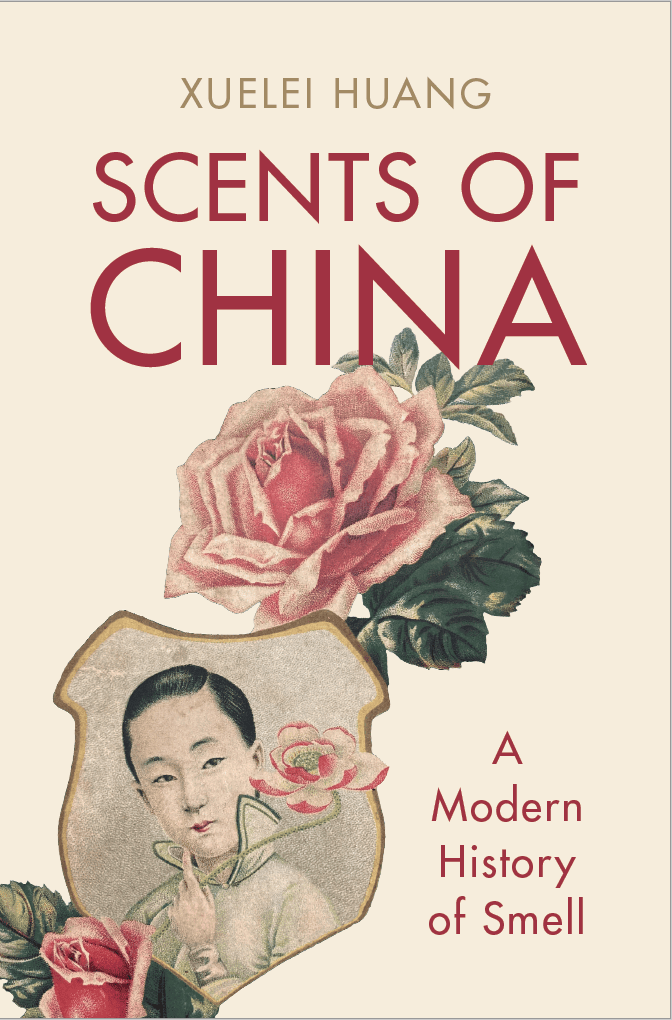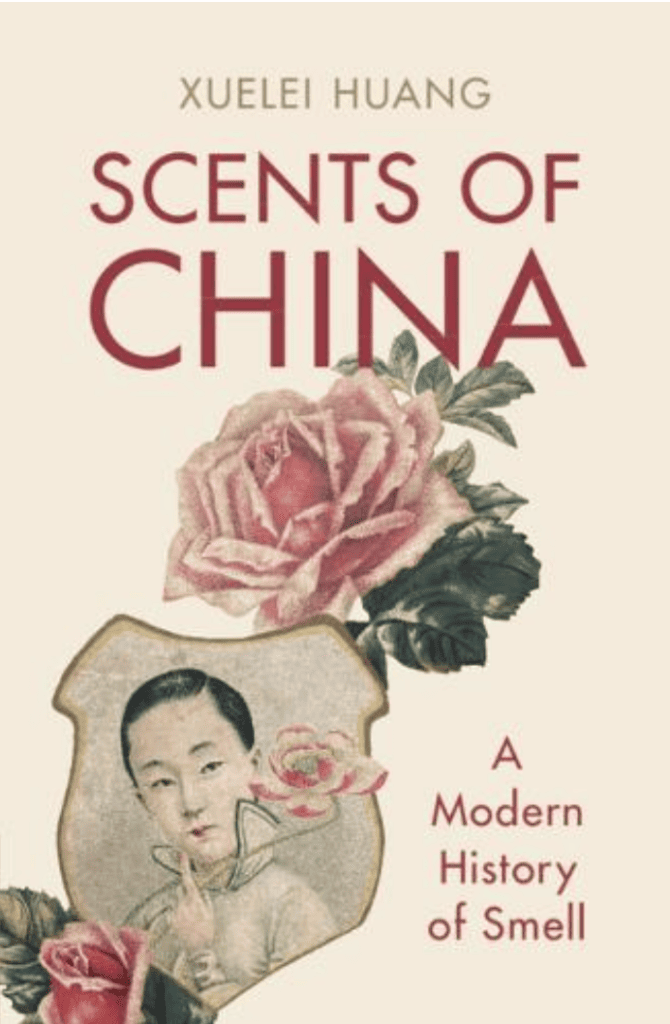Huang Xuelei, a senior lecturer of China Studies at Edinburgh University, recently published the book Scents of China: A Modern History of Smell (Cambridge University Press), which tells the history of China through smell and scent. Here, she talks to CBBC’s Antoaneta Becker about how Mao used smell to his advantage and the rise of the perfume market among China’s Gen Z consumers.
How did you end up writing a book about scents?
I read Alain Corbin’s book [The Foul and the Fragrant: Odor and the French Social Imagination] and thought it was something really fascinating. I was inspired. Before I started this project, I hadn’t paid much attention to smells, but I was intrigued as to how smells triggered memories and emotions and engaged with historical events in modern China.
Why do you think there has been such a surge in smell-related publications recently?
When I started studying the subject 12 years ago, it wasn’t a particularly popular subject. The study of sensory experiences and cultures started a few decades ago, but today this surge of smell studies is in part thanks to Covid-19. There is a strong correlation with people’s experience of Covid as many people lost their sense of smell – including myself when I was writing this book – and we also felt isolated without much human contact and interaction. We suddenly came to know how it felt living in a world without smell and other sensory input from interacting with others.
Why have there been so few publications on scent in China?
Sensory study is still quite Eurocentric, a Western-focused field that started in North America, and China has been a little bit slow in catching up. Chinese language publications so far are more focused on historical Chinese incense culture and are mainly descriptive. So I wouldn’t say there aren’t publications in China, they just have a different kind of approach and haven’t reached an international readership.
What are the main takeaways of your book?
My book is a cultural and social history of smell in China. I start with the eighteenth century by focusing on the perfume culture in everyday life. Then I trace modern environmental deodorization and the perfume industry, which changed our perception of bodily odour and our threshold of olfactory tolerance. I also look at the Mao era and propaganda language, which uses smell as a tool for political purposes. Certainly, it’s not just Mao who has used smell language this way; it’s also seen in other cultures – Christian texts describe paradise as fragrant whilst hell is evil and stinky. It’s quite universal to use olfactory metaphors to understand moral dichotomies. But in Mao’s case, he’s exceptionally good at using the kind of vivid language that everybody can relate to. If you say, ‘this class enemy is really stinky’, then for the masses, for people who are not highly educated, they can relate to that.
There has been something of a boom in the modern fragrance industry in China, why do you think that is?
I think Covid is an important trigger to that surge. China had a very strict lockdown, and people felt a need to find connectivity. Subconsciously they regarded smell as a way to connect. But at the more conscious level, people found lockdown boring; selfcare and home care became a higher priority for them. Burning incense and using home scents and diffusers really helped cope with lockdown, and the trend seems to have stayed as people continued to work from home more.
What about personal scent products? Has that evolved much in the last few years?
Definitely. You could argue Covid kickstarted it, as the joke was that when people were wearing masks, they didn’t need to wear lipsticks, so instead, they started to wear perfume. But overall, I think it’s related to the growing confidence of Chinese consumers in terms of finding diversity and their own identity. Beyond visible physical appearance, they seek more subtle self-expression through scents and perfumes.
Some people wear Chanel No. 5 or those iconic brands for status, and they are still selling very well. But a younger generation of consumers want to have their own identity by developing new consumer trends, tastes and preferences. The current Chinese perfume market reflects this changing landscape.
As China’s perfume culture is a much newer phenomenon, is China’s smellscape more open to new influences than the Western smellscape?
Since China’s perfume consumers are predominantly younger generations of society, they are perhaps more open to innovative and creative perfume types, but Chinese consumers are still attracted to smells they have had cultural and physical connections with. In my chapter about the 1930s Chinese perfume industry, I explained why Chinese manufacturers used a lot of indigenous fragrances, such as osmanthus, jasmine and magnolia. It was not only for the purpose of keeping costs down but also because consumers’ familiarity with these fragrances boosted sales. Physical exposure to a certain scent certainly attracts people to it. Traditional or indigenous Chinese smells are still very much relevant to consumer trends today.
What are the more popular scents in the Chinese market?
Dongfangxiang, or Oriental fragrances. There are approximately six categories. Japanese Yuzu, the concept of using grapefruit or citrus, is very popular now, not only in the perfume sector, but also in the culinary industry too. Chinese traditional floral fragrances from plants like osmanthus, magnolia and gardenia are also very high up the list. These are even used in flavoured coffees in China.
Other categories include Chinese herbal medicine, such as Xiangfuzi, and, unsurprisingly, woody smells, such as popular sandalwood. Then tea flavours are certainly favoured, though it’s difficult to distil essences from tea leaves. Most surprising is fungal fragrances. Of course, the Chinese like mushrooms such as the Mu’er and the Matsutake mushroom, but it’s hard to imagine how they smell in a perfume.
Is the Chinese fragrance industry a female-led industry?
We traditionally associate fragrance to women but in Chinese literati culture, the art of incense is predominantly a male skill for Confucian scholars to master. During the Song Dynasty, scholars compiled manuals of incense called Xiang Pu, explaining how to make and mix incense. But in the contemporary era, male scents are mostly limited to middle class office workers, although Gen Z consumers will buy perfumes as part of the package of their identity.
The three big Chinese brands everyone knows are Documents, Melt Season and To Summer, why do you think they do well?
These brands have great narratives about their products. At the To Summer store they have a story around each product. A few lines of poetry echo the name of the fragrance. Even the fragrance notes are not just lemon, apple and so on, but are described as something like “the morning sunshine shining through the skin”. So they give you a concept of how you feel it. I think this kind of narrative is very important for Chinese consumers. Also, they pay careful attention to the packaging – the bottle, the stopper, and the box are tastefully designed, making these brands very giftable. The things beyond the perfume – the aesthetic value, the experience and so on – are components of a unique identity, which appeals to the taste of young Chinese consumers.
Find out more about the Chinese fragrance market at CBBC’s latest China Chat on 16 May 2024
For anyone with a nose for the next big thing in the beauty industry, China’s fragrance market has a scent of opportunity that is hard to miss. China’s perfume market is projected to grow to £3.7 billion by 2025, a noteworthy increase from £1.5 billion in 2021. The fragrance sector in the Middle Kingdom is exploding with opportunities for new product development and new customer acquisition, as well as intriguing brand collaborations and lucrative tie-ups.
Huang Xuelei will join branding consultant Julie Shah and Elisa Harca, Co-Founder & Asia CEO, Red Ant Asia, at China Chat to share strategic insights on working in and with the Chinese fragrance market for UK brands.





